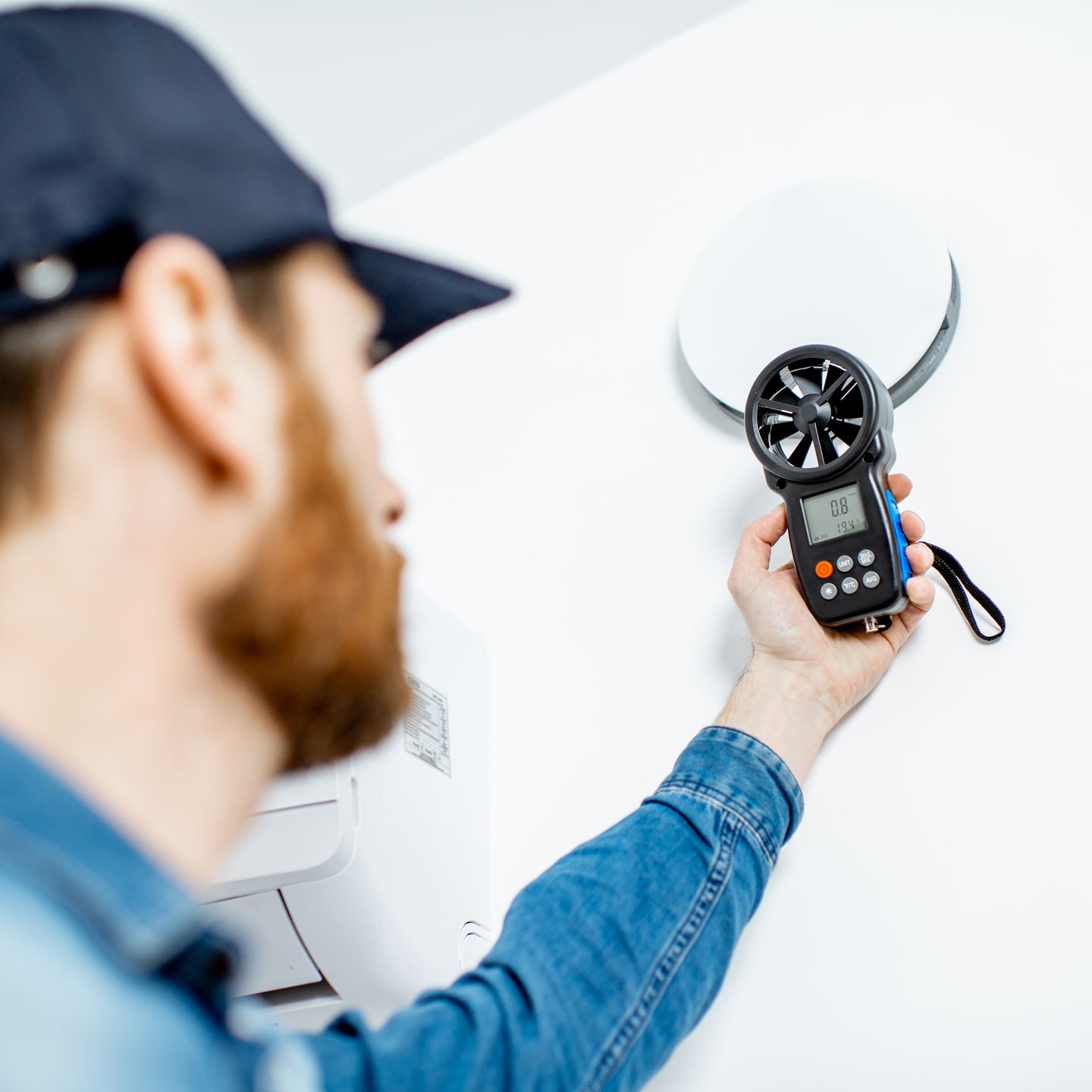
A well-adjusted ventilation system is an important prerequisite for efficient energy use in buildings. In connection with installation or remodeling of the ventilation system, an adjustment must always be carried out. Adjustment and air flows are then checked regularly in connection with the mandatory ventilation checks. A correctly performed adjustment also reduces the risk of poor indoor climate, ventilation noise, moisture and possible radon problems.
Flows that are too low not only deteriorate the indoor climate, but often lead to the flow balance being affected. If the ventilation system has mechanical supply and exhaust air with heat recovery, the recovery will deteriorate if the air flows are not balanced in the right way. If the exhaust air flow is too low, the temperature of the supply air drops, which must then be raised with the help of purchased energy. Too low exhaust air flow can also mean excess pressure in the building, which can cause moisture and mold problems.


If the air flows are incorrectly adjusted, there is a great risk that the problems will be compensated for by raising the temperature, either in the room (via the radiator system), or in the air supplied via the ventilation. Excessively high air flows can also lead to drafts, which are often compensated for by raising the temperature of the supplied air. More heat must be added, which leads to increased energy use.
Unnecessary pressure drops increase the need for electricity to operate the fan. The principle for adjusting the ventilation system is simply that the device (device for adjusting the amount of air) which is furthest from the fan should have as little pressure drop as possible. The setting on the device affects the pressure in the entire system. This can sometimes be unnecessarily high – and then the fan has to work extra hard to be able to push in, or suck out, the air all the way. This also consumes more energy, completely unnecessarily.
Some of our customers
From 1991, the Mandatory Ventilation Control Act (OVK) applies, which means that property owners are obliged to regularly check the ventilation in their properties. The check is carried out as an inspection where the function of the ventilation system is checked. Among the things that are checked is that the air exchange is sufficient and that the property has a good indoor climate. The municipality’s building committee is the supervisory authority and monitors that rules on OVK are followed. For multi-apartment buildings, preschools, nursing homes, schools and other buildings, a recurring OVK must take place every three or six years, regardless of the ventilation system. OVK must be carried out by a certified OVK inspector. When it comes to OVK, it is the owner of the building who must ensure that it is carried out.

Enstream has long industry experience of HVAC inspections and problem solving for ventilation systems in all types of properties. The work is carried out by certified personnel, where the ultimate goal is that all the properties we inspect should have a good indoor climate.
We are your long-term partner for energy saving. Enstream follows our constant guiding stars; to contribute to climate work, satisfied customers and solutions optimized with regard to energy and the economy.

Be contacted by us
Fill out the form below and one of our employees will contact you shortly!